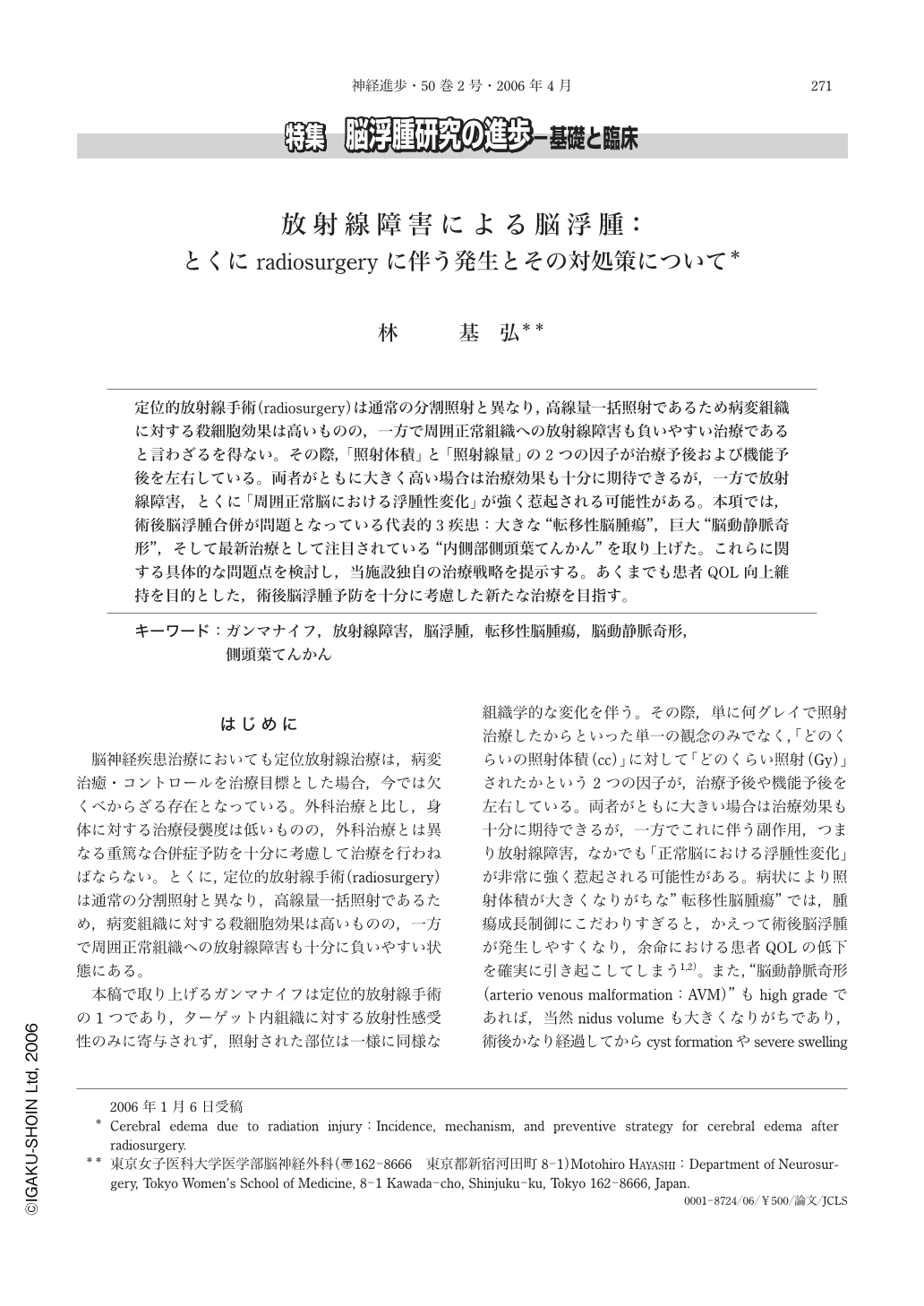Japanese
English
- 有料閲覧
- Abstract 文献概要
- 1ページ目 Look Inside
- 参考文献 Reference
定位的放射線手術(radiosurgery)は通常の分割照射と異なり,高線量一括照射であるため病変組織に対する殺細胞効果は高いものの,一方で周囲正常組織への放射線障害も負いやすい治療であると言わざるを得ない。その際,「照射体積」と「照射線量」の2つの因子が治療予後および機能予後を左右している。両者がともに大きく高い場合は治療効果も十分に期待できるが,一方で放射線障害,とくに「周囲正常脳における浮腫性変化」が強く惹起される可能性がある。本項では,術後脳浮腫合併が問題となっている代表的3疾患:大きな“転移性脳腫瘍”,巨大“脳動静脈奇形”,そして最新治療として注目されている“内側部側頭葉てんかん”を取り上げた。これらに関する具体的な問題点を検討し,当施設独自の治療戦略を提示する。あくまでも患者QOL向上維持を目的とした,術後脳浮腫予防を十分に考慮した新たな治療を目指す。
Stereotactic radiosurgery(SRS)is not conventional radiation therapy. SRS leads destructive changes to the pathological tissue which is involved within the target. Additionally, the surrounding normal brain tissue would be also damaged, because SRS is higher energy radiation therapy because of single-high dose radiation. When we have to perform SRS,“target radiation volume”and“radiation dose”should be considered as the most important treatment factors to provide good prognosis to the patients. If both two factors are too large, the treatment effectiveness will be better. However, there will be much more risky to develop into“severe brain edema in the surrounding normal brain tissue”. In this article, we'd like to demonstrate the represented diseases which have problem to be easier to trigger the development of“perifocal edema”after SRS;large“metastatic brain tumor”, huge“arteriovenous malformation”, and“mesial temporal epilepsy”as one of recent indication in the field of functional radiosurgery.
We'd like to demonstrate our latest treatment strategy which was considered very much to avoid the development of“perifocal edema”after SRS, in order to provide better QOL to the patients.

Copyright © 2006, Igaku-Shoin Ltd. All rights reserved.


